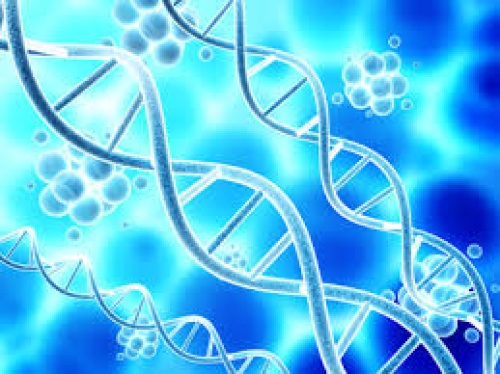Anorexia nervosa and bulimia nervosa are serious eating disorders with a significant effect on the whole population and a large prevalence in adolescents or young women.
It may occur in all ages, irrespective of race and socio-economic status; however, it is more common in adolescence between 13 and 20 years of age and affects mainly women (1 out of 10 girls).
They are both characterized by changes in dietary behavior and weight adjustment in light of the low self-esteem resulting from the misconception of body weight and body image.
The etiology of these disorders is complex, as different biological and psychosocial factors are involved.
In the occurrence of anorexia nervosa and bulimia, the impact of different genetic factors is particularly important.
Early diagnosis with pharmacogenetic analyses is essential as it recognizes the existence of such a disorder at an early stage; the patients have a high probability of complete rehabilitation.
Brain Derived Neurotrophic Factor (BDNF)
BDNF is a part of the neurotrophin family and plays an important role in the development and plasticity of neuronal synapses. In particular, it induces the survival of neurons and their differentiation during development in the peripheral and central nervous system and plays a regulatory role in functions such as neuronal homeostasis and processes such as learning and memory.
In the BDNF gene has the Val66Met polymorphism been identified, associated with the likelihood of a variety of mental disorders such as depression and psychosis as well as the severity of the symptoms of these diseases and is also associated with the occurrence of suicidal behavior (attempt or ideation).
At the same time, Val66Met polymorphism is associated with an increase in the likelihood of eating disorders. In particular, individuals carrying the 66Met allele have an increased chance of developing anorexia nervosa or bulimia nervosa.
Serotonin transporter (5-HTTLPR)
 The 5-HTT transporter of the serotonin hormone contributes significantly to the coordination of the serotonergic system which is involved in the response of patients to various drugs.
The 5-HTT transporter of the serotonin hormone contributes significantly to the coordination of the serotonergic system which is involved in the response of patients to various drugs.
The serotonin transporter gene has identified the S / L polymorphism that has been associated with the response to antidepressant drugs. In particular, the presence of the S allele in the genotype of the individual is associated with reduced response to selective serotonin reuptake inhibitors and selective serotonin and noradrenaline reuptake inhibitor venlafaxine and the occurrence of side effects in these drugs.
At the same time, S/L polymorphism is associated with the occurrence of depression and symptoms of neurotic disorders and anxiety disorders in adults, and with the occurrence of suicidal behavior (attempt or ideation).
In addition, S/L polymorphism is associated with an increase in the likelihood of eating disorders.
In particular, individuals carrying the S allele have an increased chance of developing anorexia nervosa or bulimia nervosa.
Dopamine D2 Receptor (DRD2)
The dopamine D2 receptor (DRD2), encoded by the DRD2 gene, mediates the dopamine effects on neurotransmission.
The A2/A1 (C> T) polymorphism associated with the development of depression and anxiety disorder has been identified in the D2 dopamine receptor gene (DRD2).
At the same time, A2/A1 polymorphism is associated with an increase in the likelihood of eating disorders. In particular, individuals carrying the A1 allele have an increased chance of developing anorexia nervosa or bulimia nervosa.
Serotonin 2A Receptor (5-HT2AR)
The serotonin hormone (5HT2AR) receptor 2A is a target of atypical antipsychotic drugs and mediates their actions. In the gene 2A of serotonin hormone (5HT2AR) receptor have been identified 1438G/A and T102C polymorphisms, which are inherited together, and are related to the response of individuals to atypical antipsychotics.
Serotonin 2A receptor polymorphisms are associated with an increase in the likelihood of eating disorders. In particular, individuals carrying the 1438A or 102C allele have an increased chance of developing anorexia nervosa or bulimia nervosa.
Protein FTO - Fat mass and obesity-associated gene
The FTO protein is significantly involved in the regulation of appetite. In the FTO gene has been identified the rs9939609T>A polymorphism that is the most valid genetic predisposition indicator for obesity.
This association applies to both sexes. These results were observed both in adult populations and in children and adolescents, where the risk of being obese and overweight increases by ~ 1.27 - and ~ 1.35-fold for each added risk allele.
Specifically, individuals who have the A allele on their genotype have an increased chance of becoming obese (30%), having an increased body mass index (BMI of 0.3 kg / m2) and an increased body weight (by 1.2 kg).
In addition, rs9939609T>A polymorphism is associated with loss of control in food intake and increased likelihood of anorexia nervosa or bulimia
The study and identification of BDNF 5HTTLPR, DRD2, 5-HT2AR, FTO polymorphisms contribute to choosing the best for your patient's drug therapy.
The aforementioned pharmacogenetic analyses are available at Veresies Clinic.

